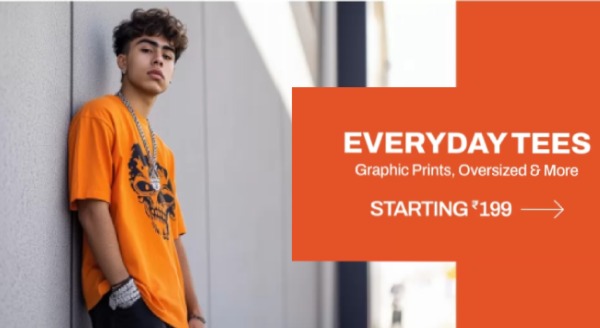Phulkari Punjabi Dress: Cherish A Timeless Heritage Perfect For Lohri Celebrations

Lohri, the Punjabi festival of bonfires, dancing, and hearty celebrations, is incomplete without the dazzling array of traditional Phulkari Punjabi apparel. Phulkari translates to "flower work", a name derived from its intricate floral embroidery. More than just clothing, Phulkari tells stories, preserves cultural identity, and represents the pride of Punjabi tradition. Whether you're a fashion enthusiast or a cultural explorer, the Phulkari has something magical to offer.
Let's journey through the fascinating history, significance, and ways to style this iconic attire that graces Punjabi festivities.
The Origin Of Phulkari: A Stitch Of Heritage
The history of Phulkari Punjabi dress dates back to the 15th century and is rooted in the Punjab region of India. It began as a form of self-expression by rural women, who embroidered geometric and floral patterns onto plain handwoven cotton fabric. These intricate designs weren't just decorative—they often narrated tales of love, joy, and daily life.
Traditionally, Phulkari was a labour of love, created by women for personal use or gifted on special occasions like weddings, births, and festivals. The embroidery style became a family heirloom, with grandmothers passing down their art to younger generations. Each stitch symbolises not just creativity but also a thread connecting the past with the present.
Why Is Phulkari A Must-Wear For Lohri?
What makes the Phulkari Punjabi dress so special during Lohri celebrations? Lohri is a festival of gratitude, marking the end of winter and the harvest season. It's a time when people come together, wearing their most vibrant traditional attire to dance around the fire. Phulkari fits this joyous occasion perfectly.
Its bright colours- reds, yellows, and oranges- symbolise prosperity and happiness, reflecting the mood of Lohri. The dazzling embroidery catches the flicker of bonfire flames, making every wearer a radiant part of the celebration. Phulkari isn't just clothing; it's an embodiment of Punjabi pride and the perfect way to honour cultural roots during festivities.
How Is Phulkari Made? A Glimpse Into The Craftsmanship
Phulkari is not just stitched; it's brought to life. The process begins with a plain fabric, traditionally khaddar (handspun cotton), though modern versions might use chiffon or georgette. The embroidery is done using silk threads, called pat, in bright hues.
The art requires precision and patience, as the motifs are hand-embroidered on the reverse side of the cloth, ensuring the front displays flawless designs. The motifs range from flowers and birds to geometric patterns, each telling its own story. Some Phulkaris, such as the Bagh, are entirely covered in embroidery, showcasing unmatched craftsmanship.
Styling Phulkari Punjabi Dress For Modern Festivities
While Phulkari's roots lie in tradition, its versatility makes it relevant even in contemporary wardrobes. Here's how you can style it:
- Pair a vibrant Phulkari dupatta with a plain salwar suit for an elegant yet traditional look during Lohri
- Drape a Phulkari shawl over a simple saree to add festive charm and warmth on a chilly evening
- For a modern twist, wear a Phulkari jacket over a white kurta and jeans. This fusion look is ideal for daytime Lohri gatherings
- Accessorise your Phulkari Punjabi dress with minimal jewellery to let the embroidery take centre stage
Phulkari isn't just restricted to women's attire. Men can also embrace this heritage by sporting Phulkari turbans or jackets, adding a dash of tradition to their festive look.
The Significance Of Phulkari: Beyond Aesthetic Appeal
Phulkari is more than just a fashion statement; it's a cultural emblem. Each piece of embroidery carries a symbolic meaning. The vibrant colours stand for positivity and joy, while the intricate patterns reflect the artistic spirit of Punjabi women.
During Lohri, wearing Phulkari signifies a deep connection to one's roots. It's a way of preserving the rich traditions of Punjab and celebrating them with pride. Moreover, it's a reminder of the importance of handcrafted art in a world increasingly dominated by mass production.
Interesting Facts About Phulkari Punjabi Dress
Did you know that Phulkari embroidery was once considered a woman's diary? Every stitch and every motif had a story to tell. Phulkari also played a vital role in bridal trousseaus, with families often creating special designs symbolising blessings for the bride.
Another fascinating aspect is the variety of Phulkaris. The Bagh style is heavily embroidered and reserved for weddings, while the Chope is a simpler version gifted during a girl's wedding. Each type serves a unique purpose, adding layers of significance to this timeless craft.
Why Wearing Phulkari On Festivals Is Essential?
Festivals like Lohri are a celebration of life, community, and tradition. Wearing Phulkari Punjabi dress on such occasions is a way of honouring this heritage. It's not just about looking beautiful; it's about participating in a larger cultural narrative.
By donning Phulkari, you're not just celebrating a festival- you're keeping a centuries-old tradition alive. It's a way of paying homage to the artisans who pour their heart and soul into every stitch, ensuring that the craft remains vibrant for generations to come.
Products Related To The Article
1. SWI Stylish Phulkari Embroidered Dupatta
2. VIRICA Floral Printed Phulkari Straight Kurta And Trousers With Dupatta
3. Varanga Multi-Coloured Phulkari Printed Tiered Flared Maxi Pure Cotton Skirt
4. DIOGO LOUIS Men Printed Long Kurta
5. MALHAAR Women Pink Floral Printed Phulkari Kurti
6. Moda Chales Women Phulkari Embroidered Velvet Shawl
7. TULIP 21 Women Red Phulkari Embroidered Crop Open Front Ethnic Jacket
The Phulkari Punjabi dress is more than an outfit; it's a celebration of art, culture, and tradition. Whether you're dancing around the Lohri bonfire or simply enjoying a family gathering, Phulkari adds a touch of authenticity and elegance to the occasion.
This Lohri, embrace the beauty and significance of Phulkari. Celebrate not just the festival but also the rich heritage it represents. Let the intricate embroidery and vibrant colours of Phulkari be your style statement, connecting you to the spirit of Punjab.
* Phulkari: Embroidered Textiles of the Punjab [Read Here]
** Phulkari Embroidery of the Women of Punjab [ Read Here ]
*** The Magic Of Phulkari: Punjab's Colourful Embroidery Tradition [ Read Here ]
**** Phulkari Embroidery – The Traditional Fabric Art of Punjab [ Read Here ]
***** Unveiling the Beauty of Phulkari: A Tapestry of Tradition and Artistry [ Read Here ]
Disclaimer: The images used in this article are for illustration purposes only. They may not be an exact representation of the products, categories and brands listed in this article.





























